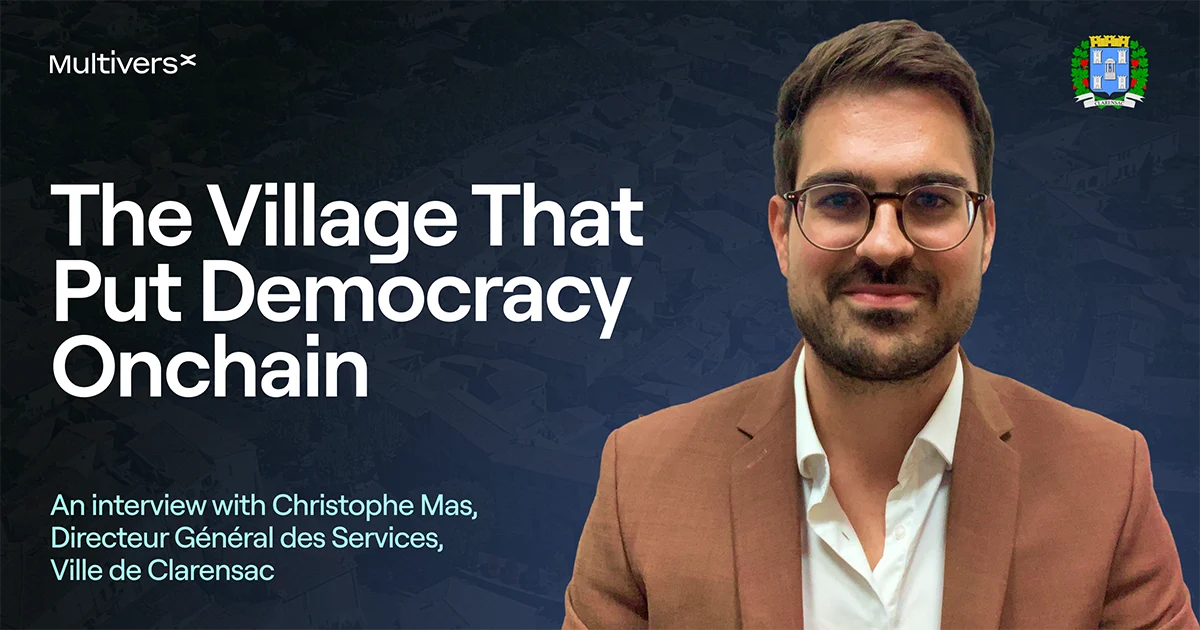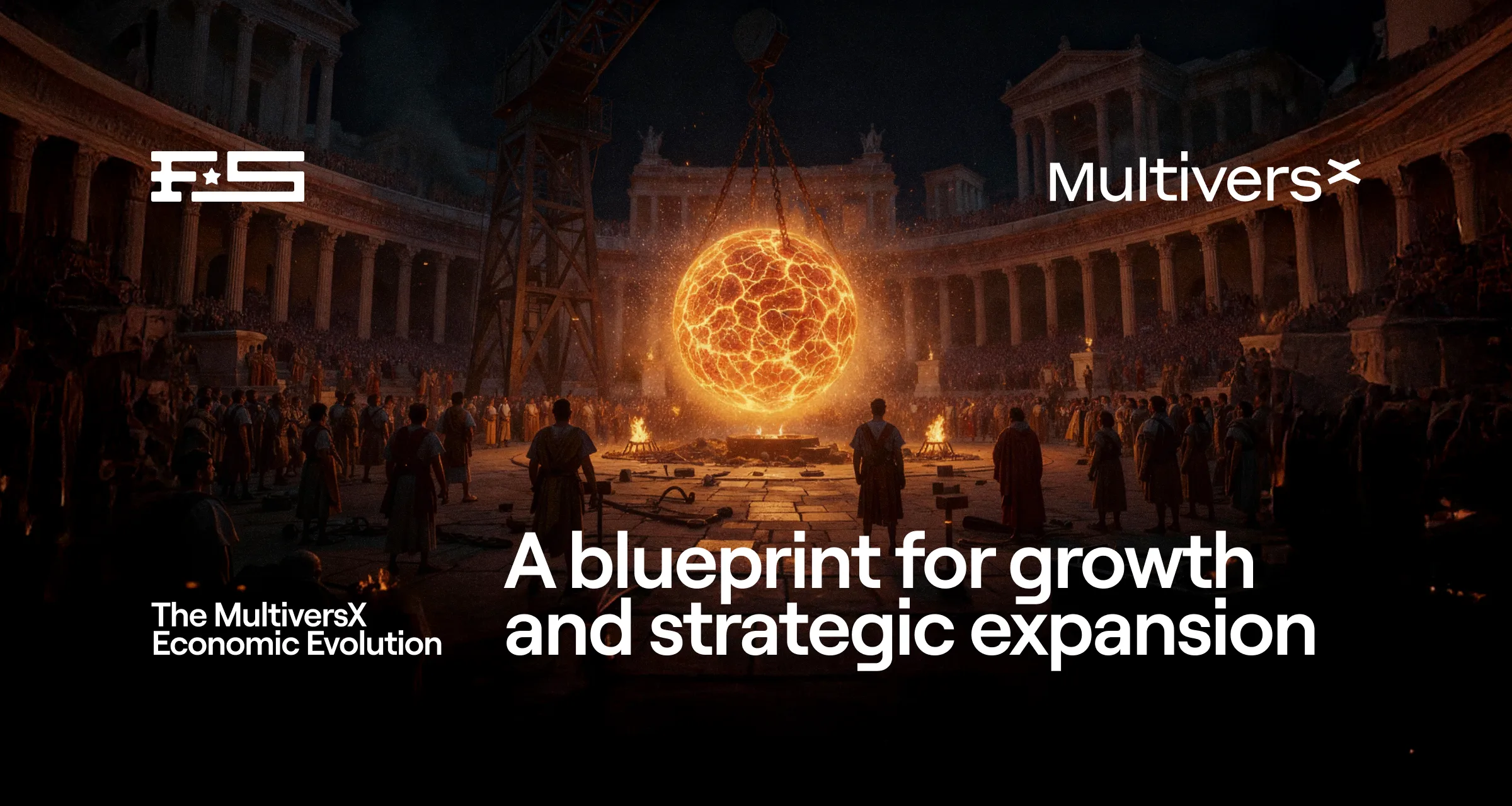

Preserving Heritage, Building Trust: An Interview with Dr. Adrian-Victor Vevera, General Director of ICI Bucharest
For more than half a century, Romania’s National Institute for Research and Development in Informatics — better known as ICI Bucharest — has been at the forefront of the country’s digital transformation.
Founded in 1970, it has evolved from an academic and government research hub into a self-funded institution working across cybersecurity, artificial intelligence, and now blockchain.
At the helm is Dr. Adrian-Victor Vevera, a former national security adviser who has helped steer ICI into uncharted territory: pioneering Europe’s first institutional NFT marketplace, bringing cultural archives onchain, and forging partnerships with museums, libraries and even the Romanian Olympic and Sports Committee.
In this wide-ranging conversation, Dr. Vevera explains why blockchain is more than cryptocurrency, how ICI navigated regulatory hurdles, and why the institute chose MultiversX as the backbone for its projects.
To begin, could you briefly introduce ICI Bucharest and its mission?
ICI Bucharest is Romania’s national research institute for IT and communications. We have more than fifty-five years of history, always under government coordination but operating as a self-funded institution. That means we compete in the market like any private company, while also serving public goals. Today, our projects span artificial intelligence, cybersecurity, distributed technologies, and, of course, blockchain. We see our mission as building bridges between research, government, and society.
Your own background is in national security. How did that path lead you to blockchain?
Before joining ICI I worked across the national security sector. I was an adviser to the Prime Minister, I worked in Parliament’s national security commission, and I collaborated with the presidential administration. In that role, I saw firsthand that you cannot talk about security today without talking about technology. The war in Ukraine shows this clearly: old techniques exist side by side with new technologies. For me it became natural, more than a decade ago, to dedicate myself to helping Romania adopt these technologies. By 2016, at ICI, we had already created a European Centre of Excellence for blockchain and a dedicated blockchain laboratory.
What was your first impression of blockchain technology itself?
My first personal encounter was in the early days of Bitcoin. It felt exotic, even strange — but quickly I understood that blockchain is much bigger. People often think blockchain equals Bitcoin, but cryptocurrency is maybe five percent of what the technology can do. Blockchain is about security, transparency, and trust. When you combine it with artificial intelligence, you get a very powerful tool with endless applications.
What role has ICI played in the European blockchain ecosystem?
We became Romania’s first node in the European Blockchain Services Infrastructure. That gave us the responsibility to show how blockchain could be used in practice. We developed projects in cryptography and secure communications. We also built one of the first institutional NFT marketplaces. And we applied the technology to practical needs, such as issuing digital diplomas for students or creating digital vaults for secure documents. For us, blockchain is not theoretical — it is applied science.
How did the partnership with MultiversX come about?
Around five years ago we started working with Elrond, which is now MultiversX. We wanted to learn directly from a private-sector team living in this ecosystem every day. It was a very important decision because it helped us understand how blockchain businesses actually operate. With that experience, we could then turn to public institutions and explain how distributed technology could help them — whether in project management, document verification, or secure communications. Our role has always been to bridge the government sector with the private blockchain ecosystem.
The NFT marketplace you built with MultiversX was one of the first of its kind. What did the early projects look like?
We started step by step. The first big project was with the Romanian Olympic and Sports Committee. It was the first time a state entity in Romania launched an NFT collection. We celebrated national champions like swimmer David Popovici and marked the centenary of Romania’s first Olympic medal. From there we expanded to AGERPRES, our national news agency, which has more than 130 years of archives and millions of historic images, and then to the “Carol I” Central University Library, which holds rare manuscripts. These are institutions with deep cultural value, and blockchain gave them a new way to share that value with the public.
What challenges did you face bringing state entities into Web3, especially from a legal perspective?
At the beginning, the law was unclear. When we sold the first NFTs, nobody knew how a public institution should account for the revenue, or how to handle the exchange from crypto to fiat. It created confusion. Four years ago, the Prime Minister set up a commission to update the law, and ICI played a leading role. Today, the rules are clear: if an institution earns revenue from blockchain, it knows exactly what it must pay to the state and what obligations it has. That clarity has been essential for moving forward.
One of your most visible projects has been the Teslaverse. How did that collaboration start?
The Nikola Tesla Museum in Belgrade already knew about our work. Tesla is such an iconic figure in science and technology, and the museum’s management wanted to find new ways to connect with younger generations. Because they are also part of the International Council of Museums, they saw this as a pilot for cultural institutions worldwide. So we created the Teslaverse: Tesla’s letters, sketches, patents, and photographs preserved as NFTs. It became our first cross-border collection, and it was a success.
What makes the Teslaverse special compared to a digital archive?
A digital archive is like a file system. The Teslaverse is alive. Owning one of these NFTs gives you a personal connection to Tesla’s legacy. You are not just browsing a museum database; you are participating in preserving history. That is the difference blockchain makes.
Beyond cultural heritage, what other areas have you explored?
We experimented with NFTs for social impact. For example, we partnered with an NGO supporting victims of domestic violence, and the NFT collection helped fund their programs. We want to expand this model into public-private partnerships, where local governments and NGOs create collections to fund parks, monuments, or schools. Blockchain makes it possible for citizens to directly support projects in their own communities.
ICI recently worked with the Bucharest International Air Show as well. What was that about?
Yes, this summer we launched the first NFT collection for an air show. It was a unique experiment. The ‘VIP’ and ‘Stratosphere’ NFTs sold out in 20 minutes and included real-world perks like meeting the pilots. We are now preparing the 2025 collection and considering NFT-based invitations. It’s about linking the digital with real experiences.
Looking ahead, where do you see blockchain going in the next decade?
Blockchain will become invisible but it will be everywhere. It gives you traceability and data validity; it shows exactly when and how information is accessed. It is versatile — from cybersecurity to digital art to finance. People will not talk about blockchain; they will simply use services that depend on it. Our job at ICI is to make sure those services are trusted, permanent, and accessible.
Thank you for the conversation.






